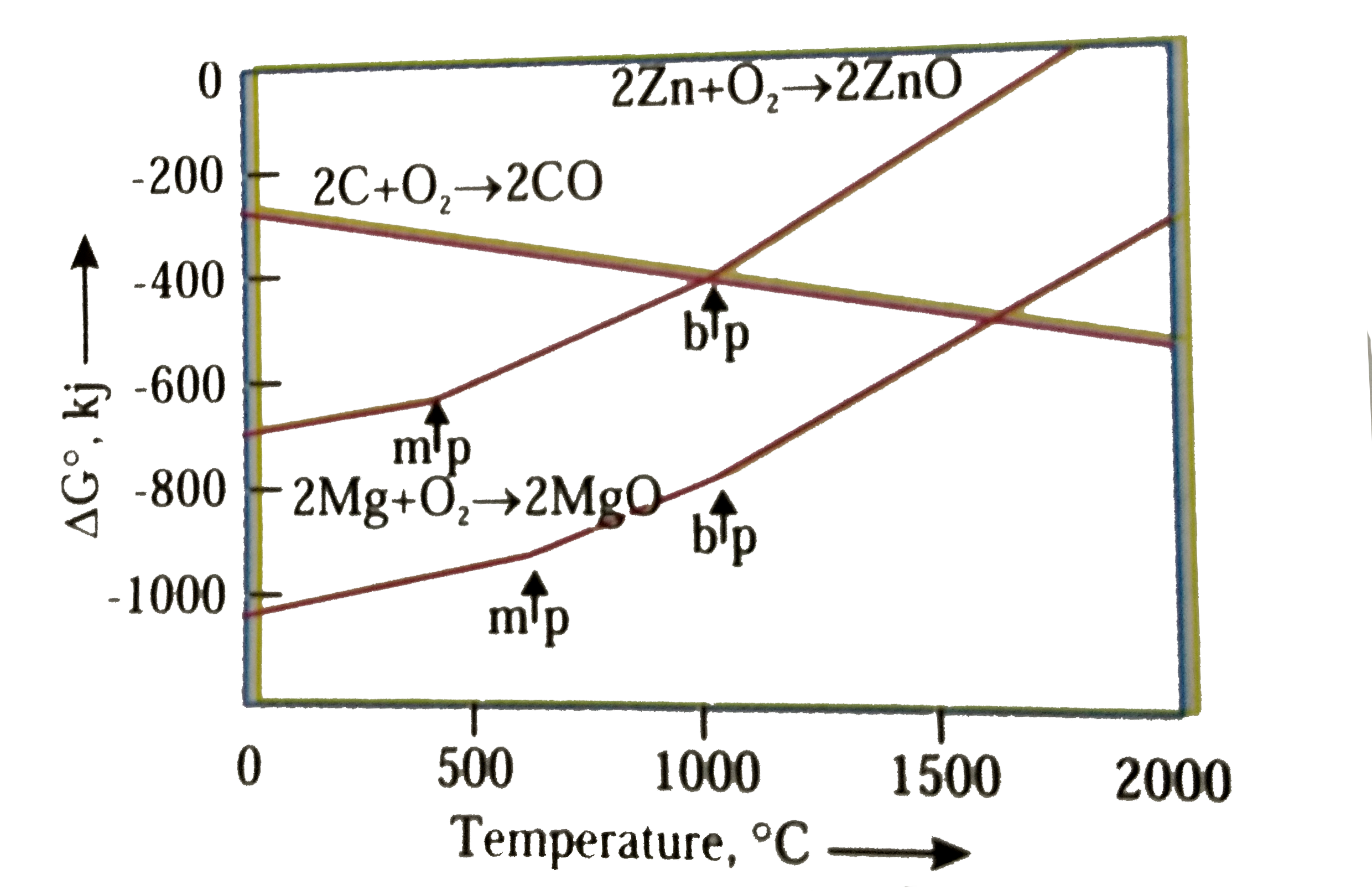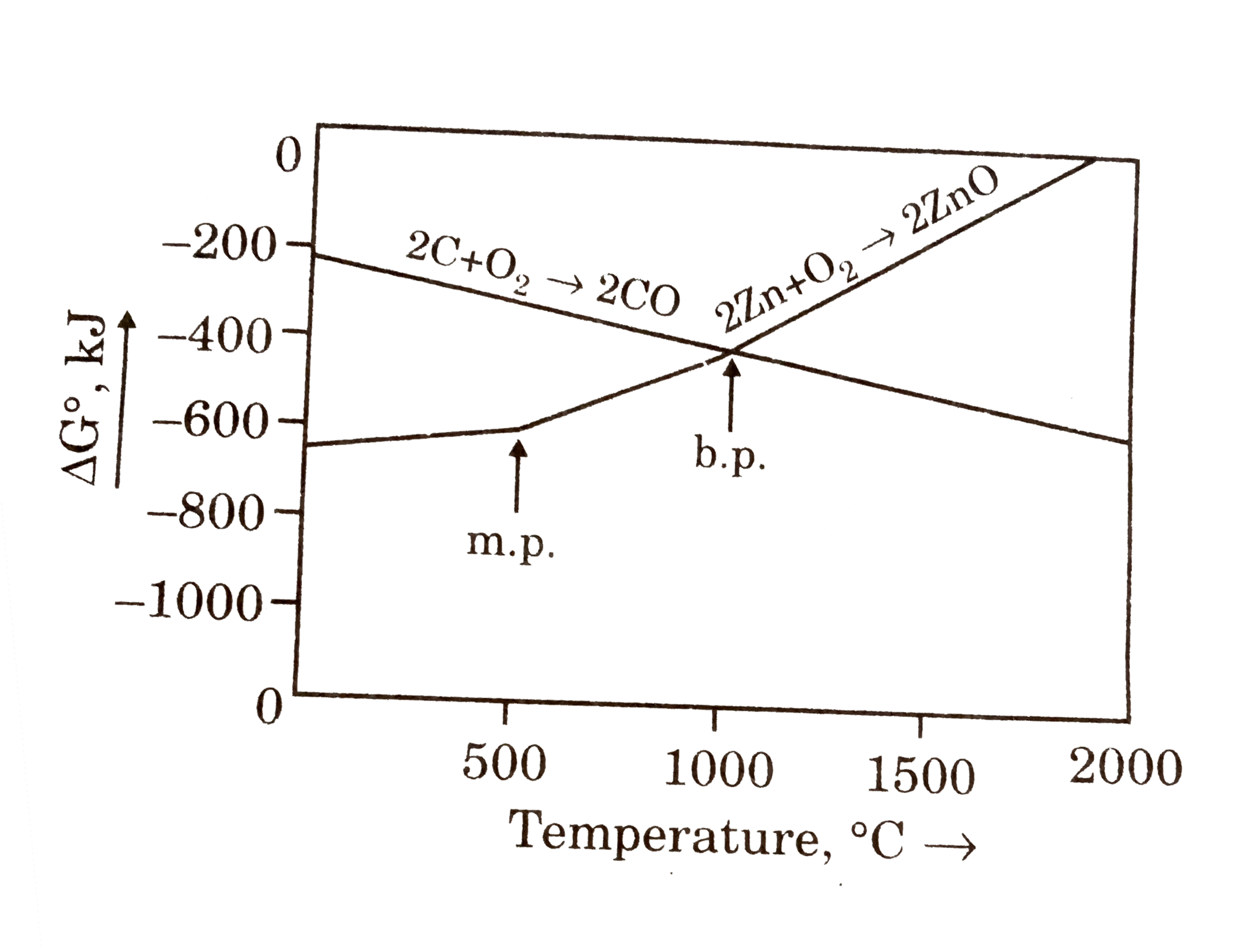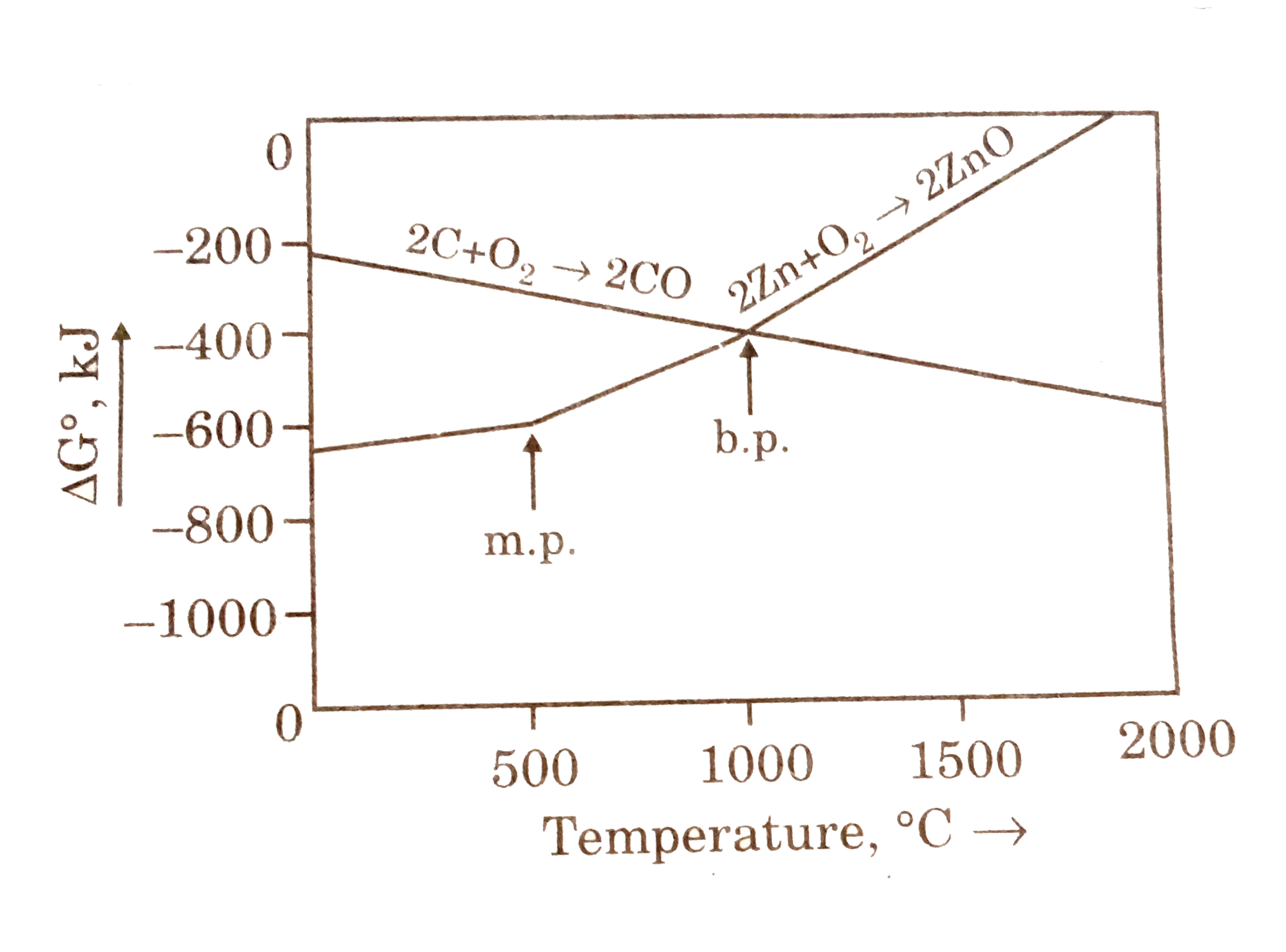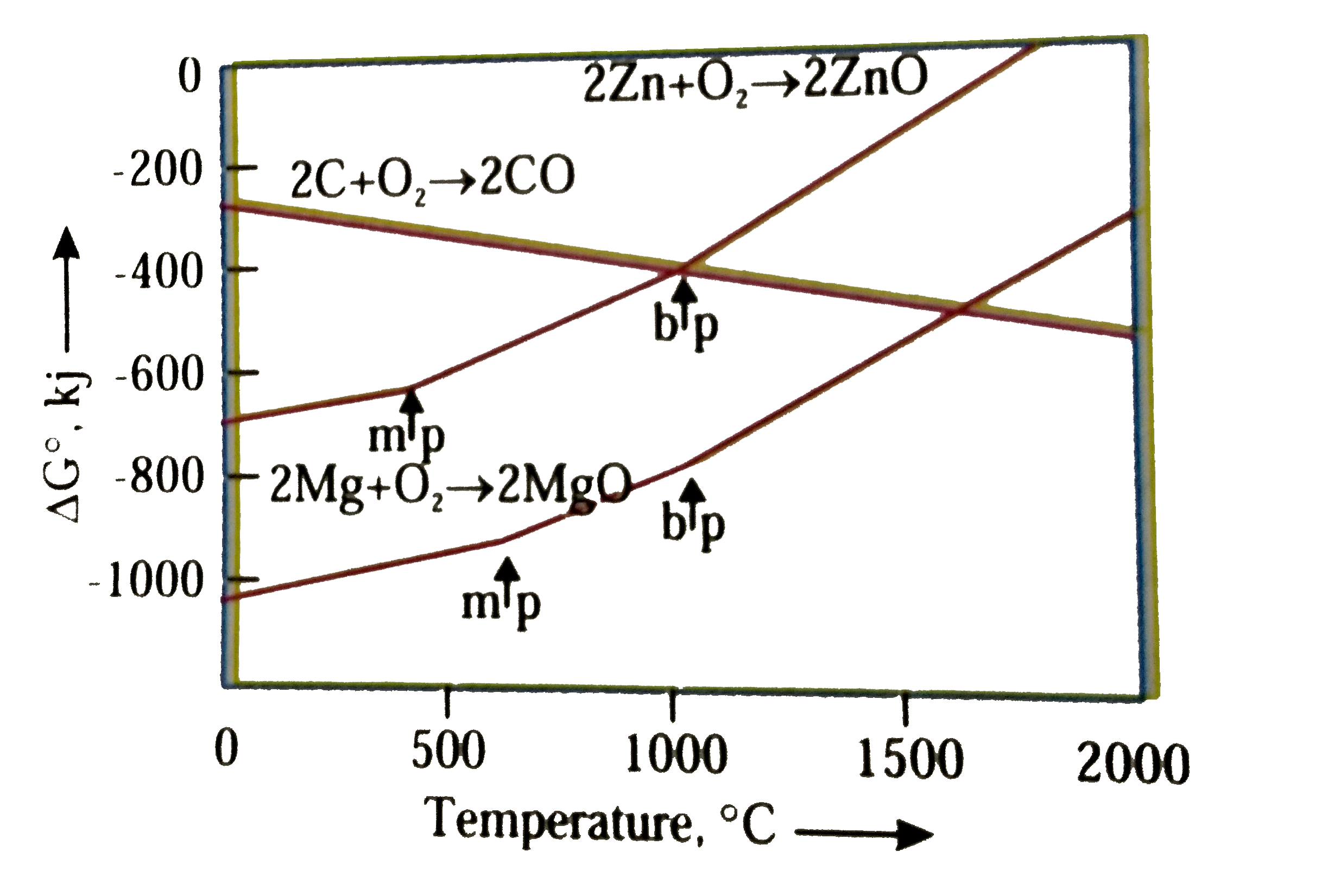Question given below are based on the given diagram of extractive metallurgy.

The point noted by arrow are the melting and boiling points of the metals zinc and magnesium. ΔG∘ as a function of temperature for some reaction of extractive metallurgy.
At this temperature ΔG∘ of the reaction is:
ZnO+C→Zn+CO
−ve
+ve
zero
nothing can be said
The correct Answer is:c
Step by step video, text & image solution for Question given below are based on the given diagram of extractive metallurgy. The point noted by arrow are the melting and boiling points of the metals zinc and magnesium. DeltaG^(@) as a function of temperature for some reaction of extractive metallurgy. At this temperature DeltaG^(@) of the reaction is: ZnO+C to Zn+CO by Chemistry experts to help you in doubts & scoring excellent marks in Class 12 exams.
Updated on:21/07/2023Similar Questions

The points noted by arrows are melting and boiling points of the metal zinc and magnasium. ΔG0 as a function of temperature for some reaction of extractive metallurgy.
At 1000∘C, which reaction is spontaneous to a maximum extent
View Solution
The points noted by arrows are melting and boiling points of the metal zinc and magnasium. ΔG0 as a function of temperature for some reaction of extractive metallurgy.
At 1000∘C, which reaction is spontaneous to a maximum extent
View Solution
Knowledge Check
Question given below are based on the given diagram of extractive metallurgy.

The point noted by arrow are the melting and boiling points of the metals zinc and magnesium. ΔG∘ as a function of temperature for some reaction of extractive metallurgy.
At what temperature, zinc and carbon have equal affinity for oxygen?A1000∘CB1500∘CC500∘CD1200∘CQuestion given below are based on the given diagram of extractive metallurgy.

The point noted by arrow are the melting and boiling points of the metals zinc and magnesium. ΔG∘ as a function of temperature for some reaction of extractive metallurgy.
To make the following reduction process spontaneous, temperature should be:
ZnO+C→Zn+COA<1000∘CB>1100∘CC>500∘CD>500∘Cbut<1000∘CQuestions given below are based on the given diagram for extractive metallurgy.
(v) This method is known as :APyrometallurgyBParametallurgyCHydrometallurgyDSemimetallurgy

The points noted by arrows are melting and boiling points of the metal zinc and magnasium. ΔG0 as a function of temperature for some reaction of extractive metallurgy.
At what approximate temprature, zinc and carbon have equal affinity for oxygen?
View SolutionQuestion given below are based on the given diagram of extractive metallurgy.

The point noted by arrow are the melting and boiling points of the metals zinc and magnesium. ΔG∘ as a function of temperature for some reaction of extractive metallurgy.
At what temperature, zinc and carbon have equal affinity for oxygen?
View SolutionQuestion given below are based on the given diagram of extractive metallurgy.

The point noted by arrow are the melting and boiling points of the metals zinc and magnesium. ΔG∘ as a function of temperature for some reaction of extractive metallurgy.
To make the following reduction process spontaneous, temperature should be:
ZnO+C→Zn+CO
View SolutionQuestion given below are based on the given diagram of extractive metallurgy.

The point noted by arrow are the melting and boiling points of the metals zinc and magnesium. ΔG∘ as a function of temperature for some reaction of extractive metallurgy.
To make the following reduction process spontaneous, temperature should be:
ZnO+C→Zn+CO
View SolutionQuestions given below are based on the given diagram for extractive metallurgy.
(i) At what approximate temperature, zinc and carbon have equal affinity for oxygen ?
View Solution

